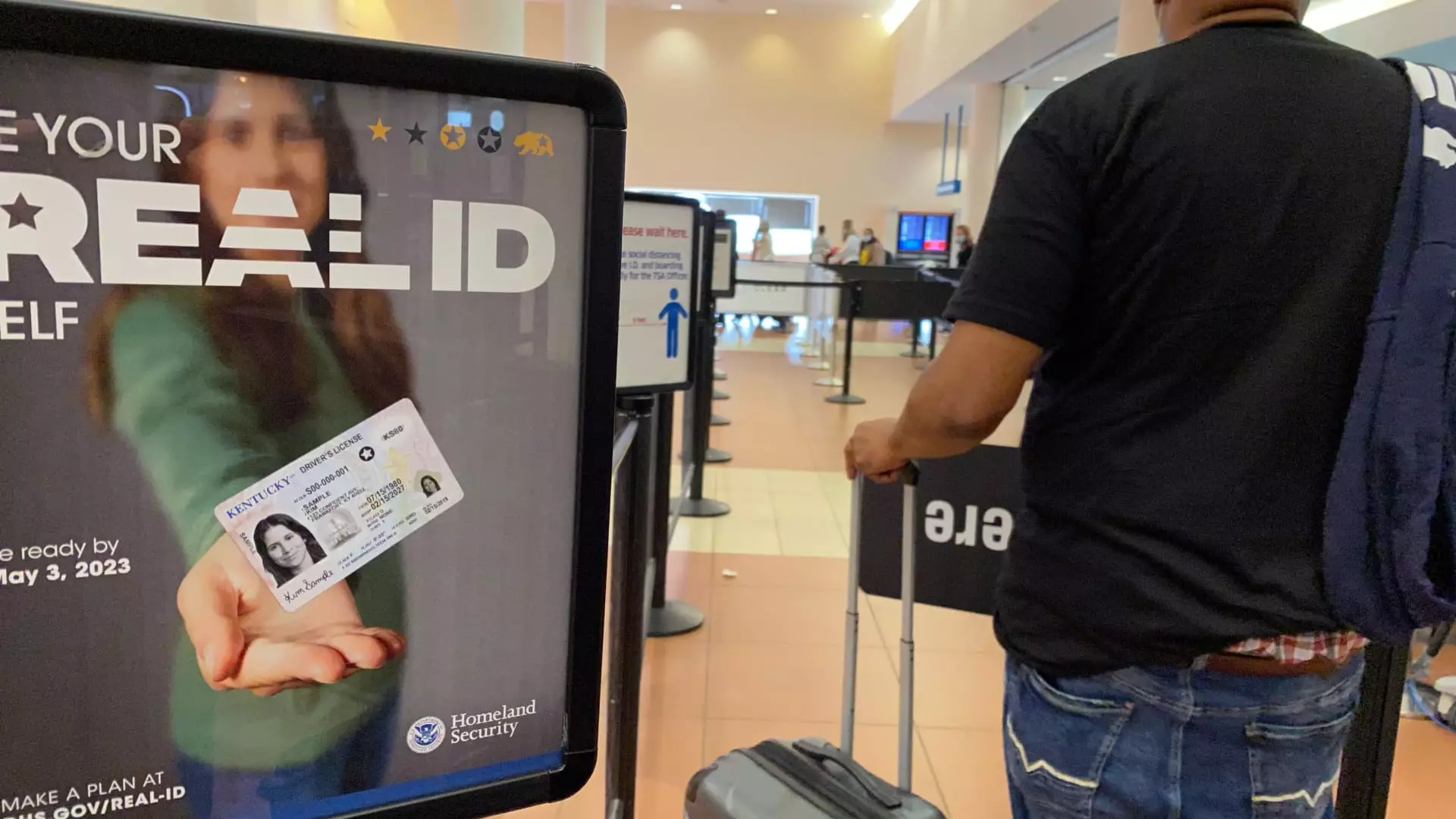As we approach the May 7 deadline set by the federal government for enforcing Real ID requirements at U.S. airports, a wave of optimism and skepticism fills the air. While the Transportation Security Administration (TSA) boasts that 81% of travelers already possess a Real ID-compliant form of identification, the important question remains: Will this impending mandate exacerbate the frustrations of an already beleaguered public? The assurance of security must not come at the expense of efficiency or accessibility.
The federal administration claims this initiative is critical for ensuring air travel safety, particularly in the shadow of the Sept. 11 attacks, which serve as the dark foundation for this policy. In light of these tragic events, it seems logical to implement stricter identification protocols—but are the logistical hurdles worth the gains? Many citizens are still grappling with long waiting times at Department of Motor Vehicles (DMVs), which have become breeding grounds for discontent rather than centers of service. The urgency communicated by TSA officials is admirable, but their restrained talk of “scarce availability” at these state agencies is reminiscent of an adage: “Good intentions pave the way to administrative hell.”
State-Level Variability: An Unintentional Disparity
The variance in state compliance further complicates matters. The one-size-fits-all approach fails to consider that not all states have the same resources or willingness to implement these measures promptly. For many citizens living in less populated areas, a trip to the DMV can be an all-day affair. With some states lagging behind, especially in rural areas, the government is opening a Pandora’s box of frustration—making it painfully clear that the Real ID may not be feasible for everyone.
Federal and state officials insist that travelers who are worried about last-minute checks and unexpected delays should act quickly to secure a Real ID or suitable alternative. However, if you happen to reside in a state where appointments are booked months in advance or where the wait time rises to three hours, then the government’s advice becomes little more than hollow words. What was once a voluntary form of convenience has now turned into an ultimatum, replete with the threat of being turned away at a security checkpoint.
Overcompensating for Security: The Paranoia Factor
The spirit behind the Real ID Act appears to stem from an excessive need to control the narrative surrounding national security. While a level of caution is warranted in today’s world, we must also ask whether these regulations evoke a sense of undue paranoia. Are we becoming so desperately fearful of potential threats that we are willing to sacrifice fundamental ideals such as easy access to freedom of movement?
The notion that identity verification acts as a lynchpin for our security apparatus is both logical and unsettling. It begs the question: Are we truly living in a society where citizens must endure systemic discomfort in order to secure their rights? Moreover, if the TSA plans to ramp up screening procedures as a response to those lacking Real IDs—often requiring “additional screening”—we may soon find ourselves questioning whether the sky-high expectations of efficiency and security can coexist.
Passengers as Pawns in a Game of Bureaucracy
At the end of the day, who bears the burden of this government initiative? It is the hard-working, everyday travelers who must navigate a convoluted labyrinth of bureaucratic red tape. The emotional and financial toll associated with acquiring a compliant ID is an inconvenience that reflects poorly on the current administration’s approach to governance. Communication through flyers and QR codes at airports, while well-intentioned, do little to tackle the underlying frustrations citizens might express.
The international landscape of air travel demands a balance of safety and efficiency, and the Real ID mandate seems to tip that scale severely towards the former at the expense of the latter. In the pursuit of increasing security measures, we must not overlook the very people these regulations are meant to protect. Without a strong focus on accessibility, we risk breeding a culture of distrust that could eventually undermine the efficacy of the very safeguards we hope to establish.



Leave a Reply